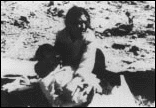|
|
 |
Director: Miyajima Yoshio Photography: Miyajima Yoshio, Nakagawa Toshihiko, Rindo Kazuo, An Kil-ch'eon, Ko Duk-ch'ang Music: Paik Jin-won Sound: Kim Jun-ho Editing: Paik Bong-gyu, Cho Kwang-ju Japanese subtitles: Park Ch'un-il 1991 / Color / 16mm (orig.35mm) / 140 min |
| The Korean peninsula was liberated with the defeat of Japan on August 15th 1945. However, the peninsula was divided by a border at the 38th parallel into southern and northern parts according to the structure of the Cold War between the USA and the USSR. The Korean War began in 1950. Many Koreans lost their lives because of the US army's ferocious attacks. Then, after the cease-fire, the peninsula became two nations, divided into South and North. In 1979, a "wall" was built by the South. Miyajima took on the making of this film as a means of sending a rallying cry to the people in Korea who are struggling for peace and unification. After portraying the postwar history of Korea by mixing together images from old film and newsreels, he shows the visit of Father Mun Ik-hwan to Pyongyang in 1989 and the grand welcome he received there. We also see the female university student Im Su-gyeong crossing Panmunjon from North to South after participating in the 13th World Youth and Student Peace Festival, and the later attempt of the 1990 "Pan-racial Conference for Unification of the Fatherland" to go the length of Korea, from Mt. Pekdu (in the very North) to Mt. Halla (in the very south), stopped from going any further than Panmunjon. The camera painstakingly details the lives of these people who confront problems head-on as they work earnestly for the reunification of their fatherland. Miyajima is famous as a cinematographer and is also known for documentary works such as Chun Ri Ma ("Chonrima"), Song of Anger ("Ikari o utae"), and We Live in the Railroad ("Oretachi wa tetsuro ni ikiru"). This film is different in that it has no narration whatsoever, speaking to the audience solely through throbbing music, frequent subtitles, and visual expression. It took almost the whole of 1990 to film, but was never exhibited until it was finally shown by the Japanese Cinematographers Association some three years after it was completed. |